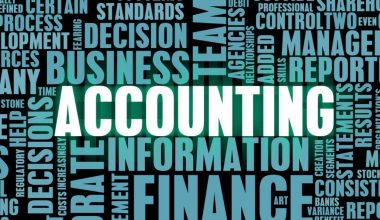Making sales and assisting in the expansion of the company are the top priorities of a sales organization. Every sales manager aspires to place their business at the top of the industry. But the point is to show that there’s more to growing a business than just making more money. There are several particular elements that have an impact on the sales and the details you close over the time frame. Read on to learn the types of annual sales reports and the key elements of a sales report.
Sales Report
A sales report or a sales analysis report is a document that lists the sales activities of a company. This report usually has information about sales, leads, new customers, income, and costs for a certain time period. It may also look at this data at each step of the sales process and tell you how well your sales team is doing (or where there are gaps).
In addition, these reports could help your company change its sales strategy and find other ways to grow. They can give advice on how to make sales, predictions of sales data for the future, comparisons of performance to times in the past, and a better understanding of what clients want.
Types of Sales Reports
No two sales reports are identical in appearance. Certain sales report formats concentrate on various sales KPIs, requirements, or tactics. Some of the types of sales reports include:
#1. Forecasts of Sales
This is one of the types of sales reports that forecast how many sales your team will generate over a specific time period. You can use them to prepare for potential company problems or predict seasonal slowdowns.
#2. Sales Funnel Reports
This is also one of the types of sales reports that demonstrate how likely a lead is to purchase your good or service. Hence, you can better understand how to nurture leads and eventually turn them into customers by using sales funnels. You can also find flaws in your sales pipeline by comparing back-to-back sales funnel reports.
#3. Conversion Reports
These reports are similar to sales funnel reports in that they evaluate the progress of leads as they move through the funnel, but they focus on the leads’ conversion into customers rather than their current position. In a typical conversion tracking report, you’ll find contacts, new and eligible leads, wins, and change rates from one period to the next.
#4. Reports on Opportunity Scores
The Einstein opportunity score serves as the foundation for opportunity score reports. This artificial intelligence-generated metric assigns a score to each lead between one and 99, with a higher score indicating a higher chance of a successful sale. You can also use these reports to plan how your team will spend their time following up on leads.
#5. Upsell and Cross-Sell Reports
These reports include information on how many and how much merchandise was up- or cross-sold to clients. Your team can look at these reports to find future upselling and cross-selling opportunities or to mark certain products and services as being especially good for these types of sales tactics.
#6. Sales Call Reports
This is one of the types of sales reports that deal with calls made to leads, prospects, and clients in an effort to boost purchases. Hence, you can learn more about the abilities of your leads and the performance of your salespeople through these reports.
Key performance indicators (KPIs) can be linked to sales reports and set to run at different times. This can help you track your progress over time. Here are a few typical frequencies:
- Sales reports each day. In a daily sales report, you can keep track of KPIs like the number of calls and leads a rep makes each day.
- Sales reports every week. A weekly sales report might track KPIs like the total number of deals closed or dollars made by the sales staff.
- Reports on monthly sales. In a monthly sales report, the data tracked in a daily or weekly sales report can be seen over a longer time frame.
- Sales reports every year.An annual sales report goes into more depth than a monthly sales report. For figuring out sales quotas for a subsequent year, it can be the most helpful. You can use it to observe the effects of marketing efforts, pinpoint particularly effective sales representatives, identify seasonal swings, and address problems with sales management.
What Are the Key Elements of a Sales Report?
You may include a ton of metrics in a sales report. But what really counts is what your company’s growth requires. The key performance indicators are what ultimately determine how well a corporation is able to conduct business.
Therefore, concentrating on metrics that are unrelated to advancing your leads is a good use of time. Because of this, we concentrated on a few key elements that are relevant to a sales report. However, the key element of a sales report are as follows:
#1. The Number of Prospect
This is one of the key elements of a sales report. It’s critical to be aware of the total number of deals in your pipeline at every step. Knowing where these deals are in your pipeline, when you intend to close them, and the possibility that they will generate revenue for your company is increasingly crucial.
#2. Size of Deals
Contracts for sales include different valuations depending on a variety of factors. However, in order to quickly and wisely plan your sales methods, you must assess the average deal size in your pipeline.
#3. Close Rate
Find out in detail the ratio of the number of presentations you made to the average amount of deals you closed. Since a salesperson is only as useful as his deal, this demonstrates how a certain representative stacks up.
#4. Sales Volume
This is also one of the key elements of a sales report. The faster a sales cycle is completed, the better it is for your sales team. This is the typical amount of time it takes a lead to enter the funnel and progress through the sales process to the closing stage.
#5. Cost Per Lead
Understanding lead costs is also one of the key elements of a sales report, especially for sponsored marketing initiatives. Although not all lead types will be charged, it is important to know what your investment is to calculate a general cost per lead.
#6. A summary
One might give the most crucial information you want to convey with the sales report by beginning it with a summary.
You can add a lot of information in your sales report template. However, if you provide too much information, it could distract your readers from the key point you’re trying to make. Instead, focus your sales report specifically on key data that are important to your sales process.
How Do You Write a Sale Report?
To construct a sales report, adhere to the following steps:
#1. Choose the Format for Your Sales Report
A sales report ought to be more than just a list of statistics and justifications. Additionally, it should be appealing and simple to read so that no one feels intimidated. You can accomplish this by downloading a sales report template or by using your customer relationship management (CRM) software to create several report kinds quickly and easily.
#2. Keep Your Audience in Mind
You might wish to include a lot of KPIs in a report that a high-ranking sales team member is delivering to the head of sales. A more concise summary might be preferred by executives. Additionally, a CEO may be more interested in certain facts than a CFO. You should be able to format your sales data for any audience with the aid of your CRM software.
#3. Incorporate the Necessary Data
The decision to include or exclude specific data sets, such as sales income and costs, period-to-period KPI change, progress on sales targets, sales by product or service, sales projections, and future sales plans, can be made after you are aware of your audience and the level of reporting that is anticipated.
#4. Establish Your Prior and Present Periods
You should decide whether the information you wish to transmit is best provided in an annual, monthly, weekly, or daily view based on the frequency criteria mentioned above. The next step is to compare the data you have for this era to data from a comparable earlier period. If you are presenting sales data for February 2021, for instance, mention percentage changes in this period’s KPIs as compared to the entire month of January 2021, not just the last week.
#5. Put Your Data Together
It’s time to compile your data once you’ve determined your information demands and data period. Typically, this phase involves connecting to your CRM software, retrieving data, and either downloading it for use in another application or directly converting it into reports from your CRM dashboard. In either case, sales reporting goes beyond simply consolidating your data.
#6. Make Good Use of Your Information
Reports on sales shouldn’t merely be a collection of figures. To make these numbers more understandable to your audience, use plenty of graphs and other useful pictures. Of course, you ought to choose the proper kind of graph. For instance, a line chart displaying revenue month over a month would be required for an annual report. You can either utilize Excel to help with graph generation or your CRM software may be able to automatically generate these charts.
#7. Verify Your Data and Details a Second Time
After gathering your information and producing charts and graphs, you should return to stages one and two and think about your audience and include the proper information. Sometimes, it takes finishing the first draft of a report before you realize you’ve included too much or too little material. Take deleted information, rebuild graphs, or approach a member of the sales staff for help without hesitation. Keep in mind that we all require editors. Prior to entering your meeting, it’s critical to achieve a balance between insight and abundance.
#8. Describe Your Findings
The most crucial step is possibly this last one. Once again, simply giving data is only half the battle; for it to have any real meaning for your audience, it must be explained. Your written justifications should support your figures and be supported by them simultaneously. They should also describe the corrections that your team intends to make.
Annual Sales Report
An annual sales report is generated by a salesman or their management and is also referred to as a yearly activity report. Also, an annual sales report outlines the patterns in the company’s annual sales report volume as well as the objectives that must be set for the following year. Daily, weekly, and monthly statistics are combined to create an annual sales report.
Why Are Annual Sales Reports Necessary?
Reporting on sales involves more than just totaling your sales and revenue. Understanding the sales process is essential for a successful sales team, strategy, and analysis. This also provides for efficient sales management. Every step of the sales process should be documented, and data analysis will show you where your company is succeeding and how to make improvements. In order to determine how to maintain sales as your business expands, you must understand precisely what is generating them. Thus, they include:
#1. Information to Report
Sales metrics are the quantitative indications showing how well your sales operations are working and whether you are hitting your goals. They aid in identifying your inefficiencies and areas of efficiency.
#2. Number of Prospects
This represents all of the prospects you have at different points in your sales funnel. In addition to knowing how many opportunities are in your pipeline, it’s critical to understand the stage at which your prospects are, when they are projected to close, and the possibility that they will become revenue streams.
#3. Deal Size
Various variables can affect a sales contract’s value, which can vary greatly. However, in order to develop timely but precise sales predictions and strategies, you must ascertain the average deal size in your sales funnel.
#4. Close Rates or Conversion Rates
Based on previous outcomes, these indicators allow you to calculate the typical number of cold prospects you need to convert into paying customers. How many deals do you currently have open for everyone that you closed, in other words?
#5. Sales Cycle Length or Sales Velocity
It speaks of the typical time it takes for a lead to enter the sales funnel and proceed to the buying stage, which is the last step in the sales process. In addition, the sales cycle should be finished as quickly as possible.
What Is the Structure of Sales Report?
Core KPIs, team performance, number of items sold, net sales, earnings, and customer acquisition costs are all included in a typical sales report.
What Is a Monthly Sales Report?
A monthly sales report is used to track, assess, examine, and figure out sales patterns each month.
How Do You Start a Report?
- Adapt your topic selection to the assignment.
- Perform research.
- Create a thesis assertion.
- Create a plan.
- Produce an outline.
- Edit and revise your paper.
- Proofread carefully and look for errors.
What Are the Most Important Sales Reports?
- analysis of the sales funnel.
- Report on the volume of incoming deals.
- Report on sales projections.
- Report on sales targets
What Is Sales Report Excel?
A ready-to-use Excel template called Daily Sales Report can be used to track and manage the monthly sales data of specific salespeople
References
- snov.io
- businessnewsdaily.com
- whatagraph.com
Related Articles
- MARKETING VS SALES: What Are the Major Differences?
- SALES FUNNEL: Definition, Types, and What You Must Know
- What Is A Sales Funnel?: How to create a sales funnel(Stages, Examples, And Strategies)
- SALES LEADS: How to Generate Sales Lead for any Business, Explained!!!
- LEASING COMPANIES: Meaning, Equipment & How It Works
- LIFO: Meaning, Methods, and Examples
- A COMPANY: Meaning, Types & Securities






